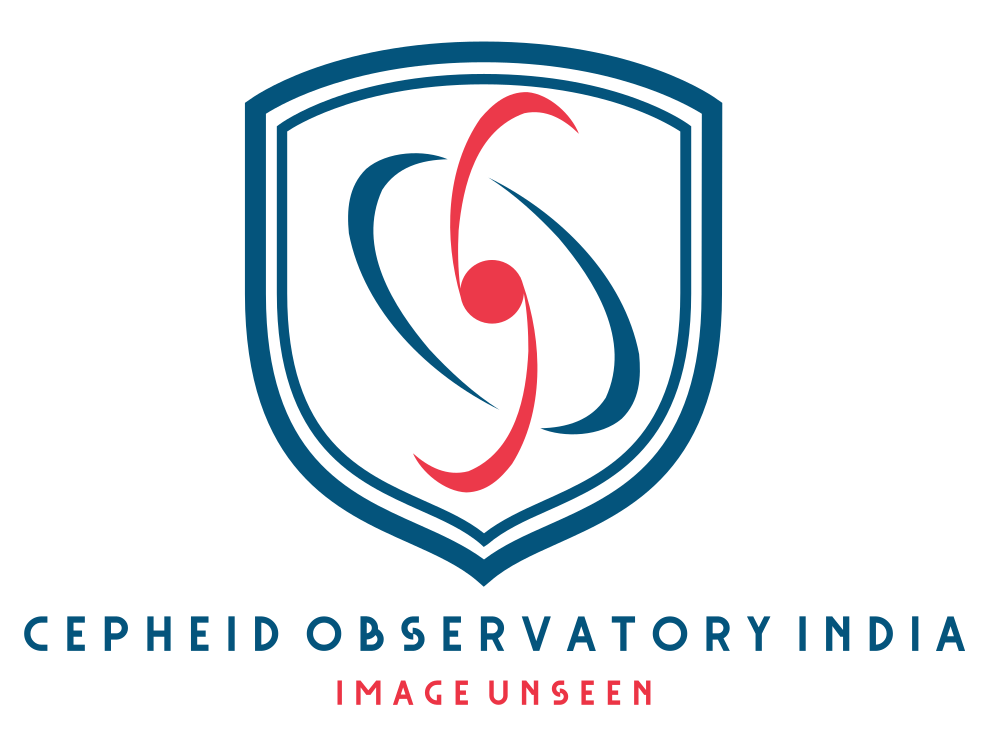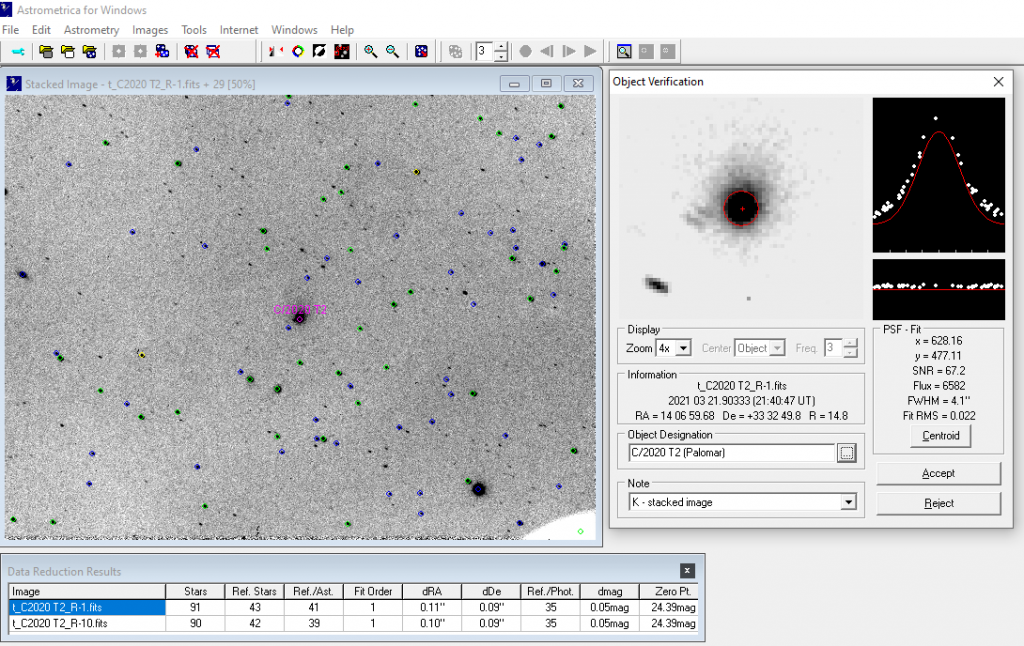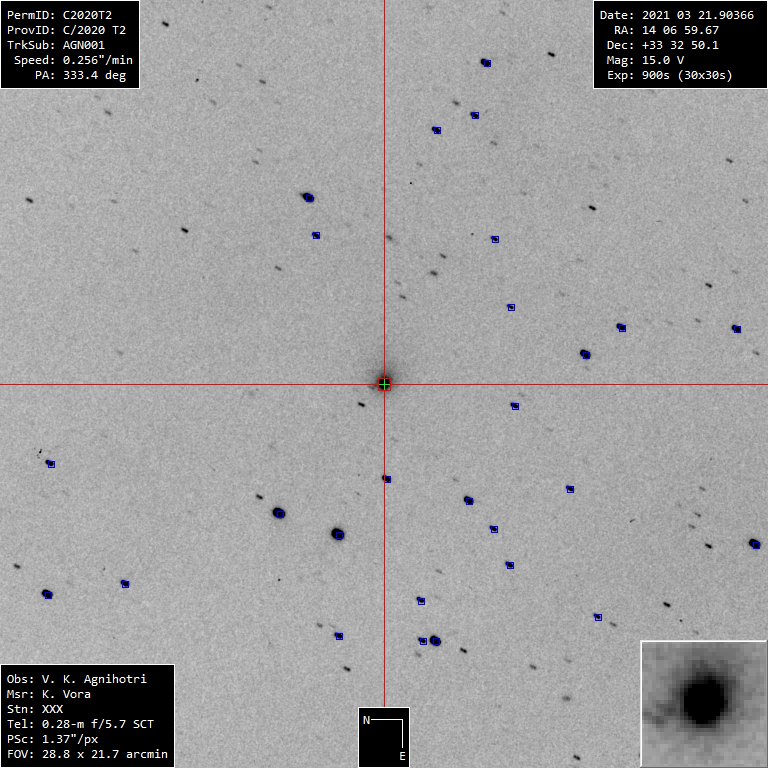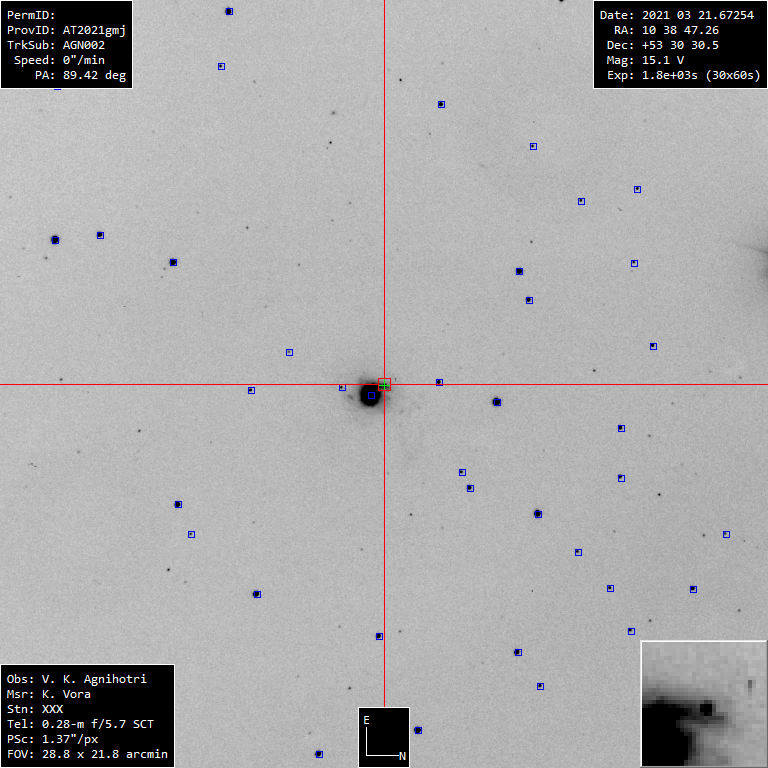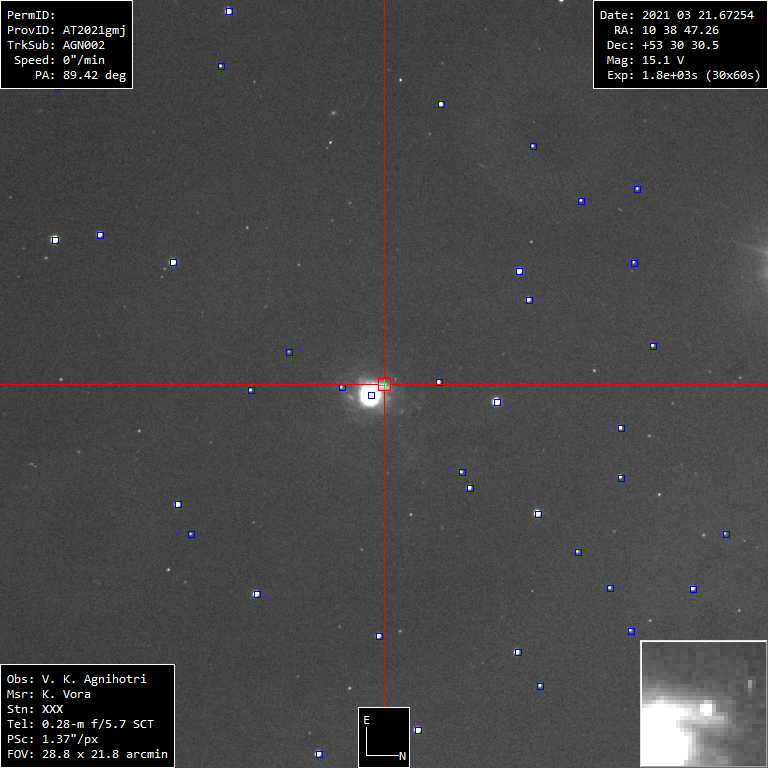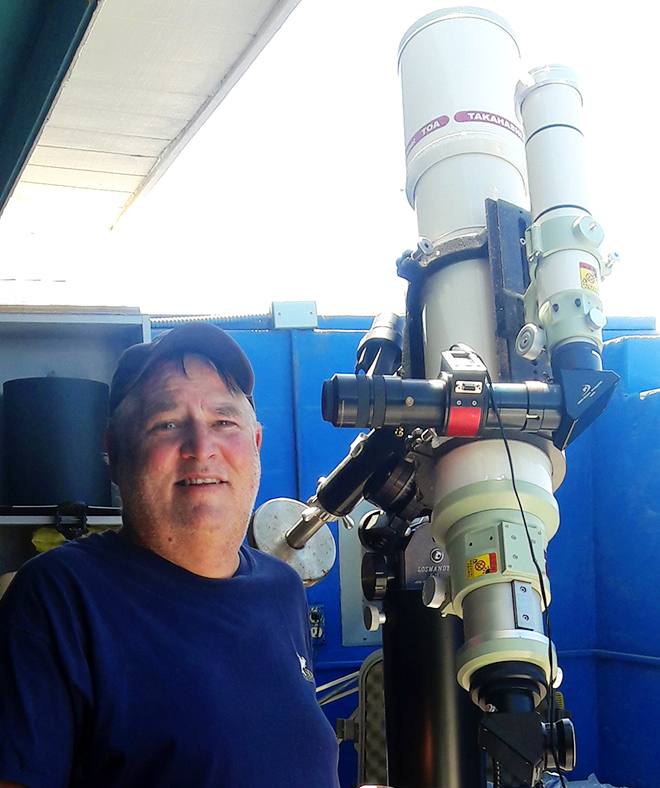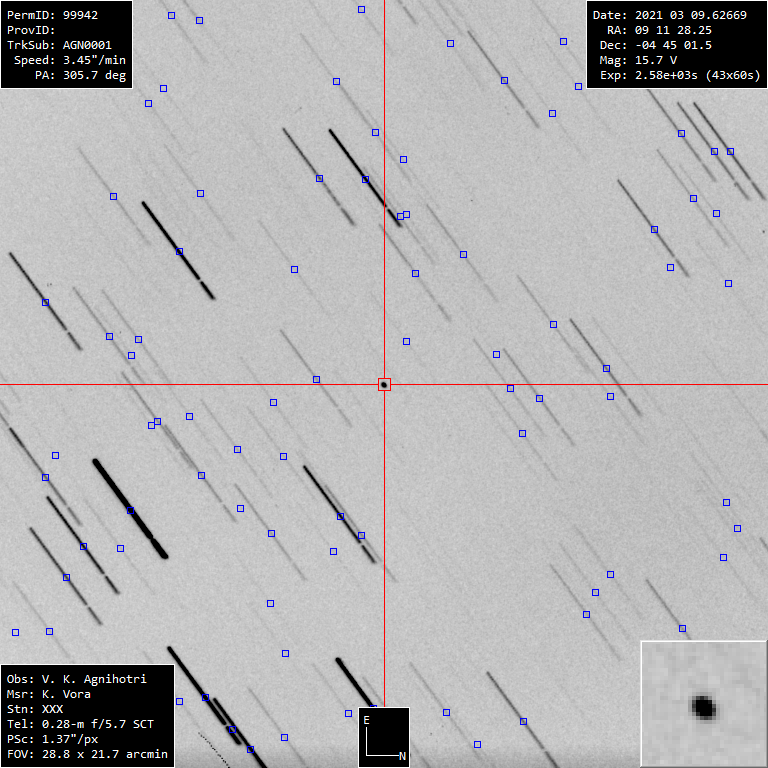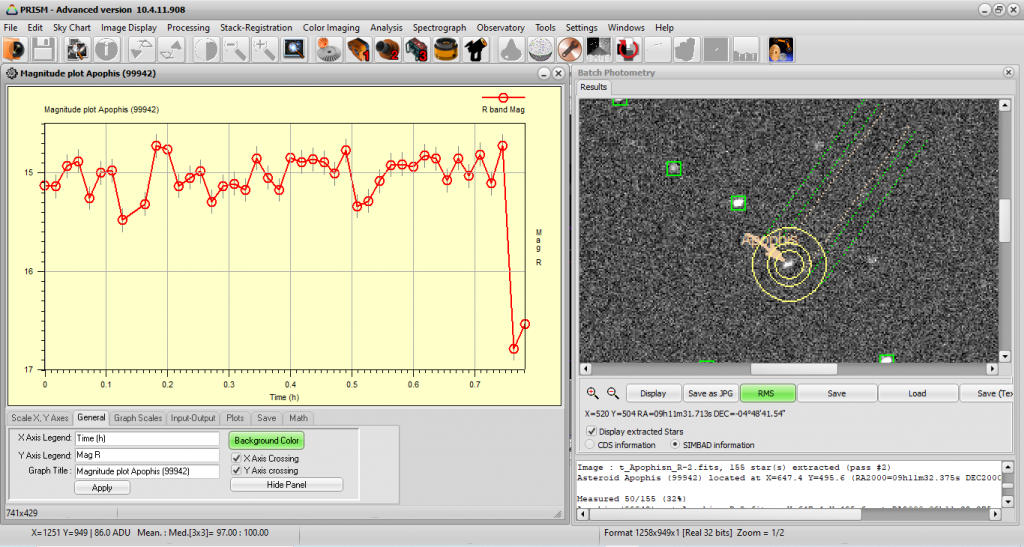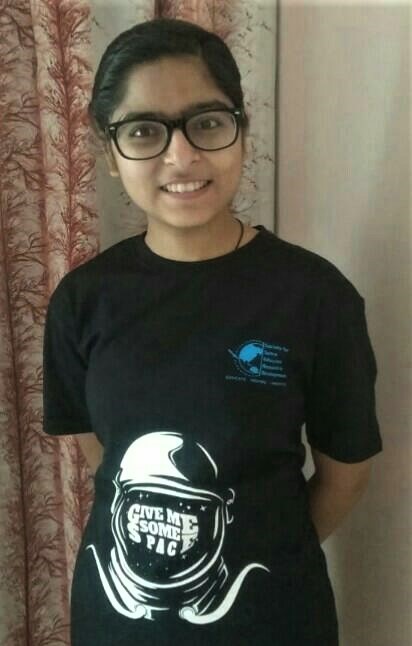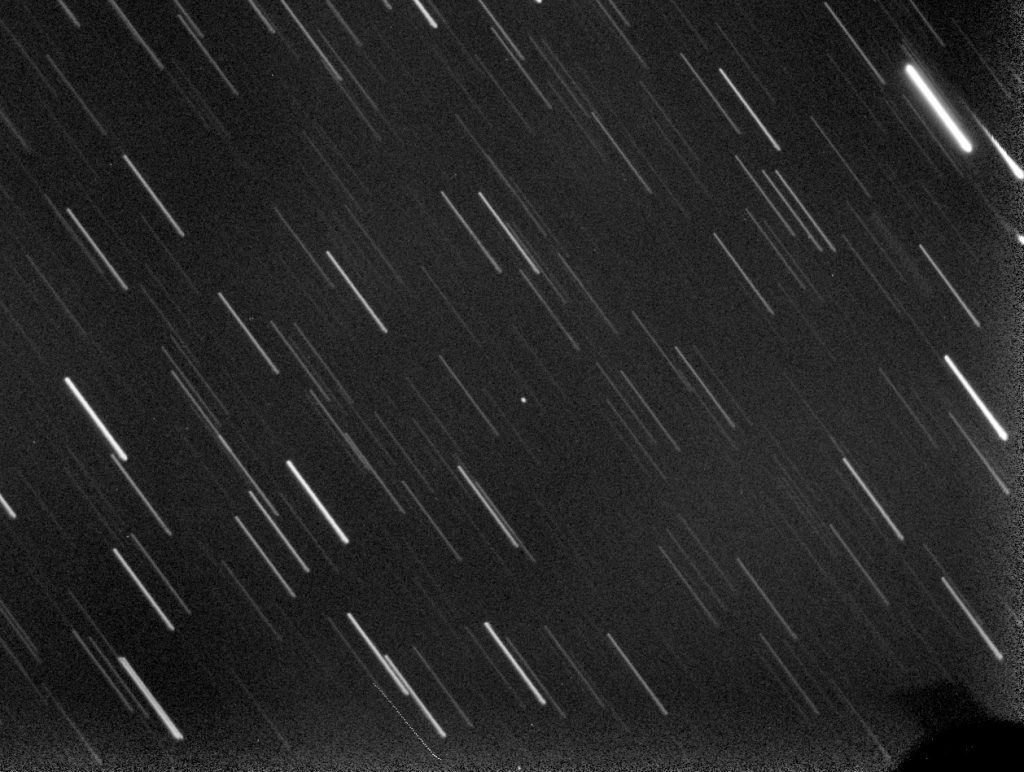We examine the astrometry and photometry of globular star cluster M13 using Gaia EDR3 and ATLAS catalogs. The Gaia EDR3 catalog is for astrometry and ATLAS catalog is for high precession differential photometry. The software Tycho 8.0 supports both the catalogs upto +22.0 magnitudes. If stars are well resolved (imaged at higher focal length), the results will be promising.
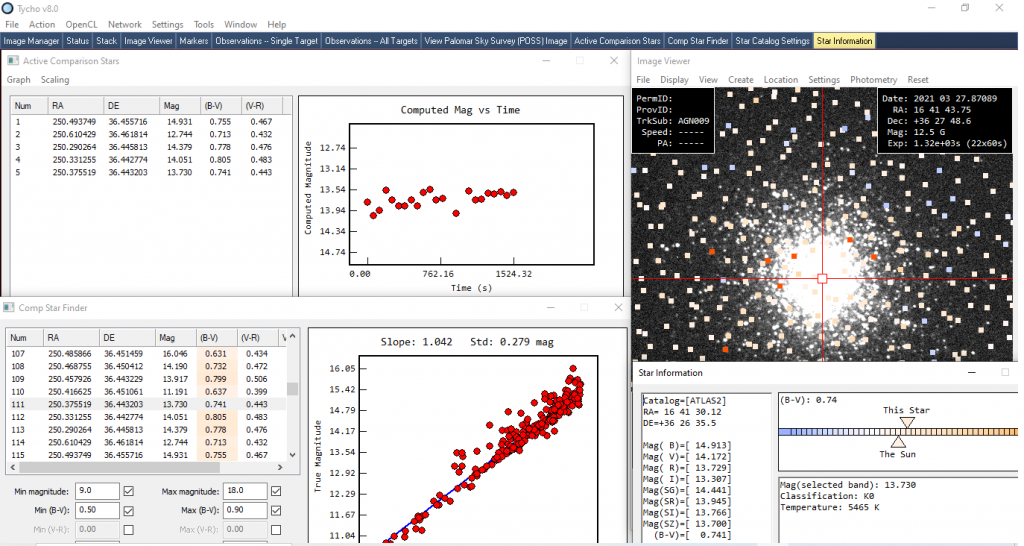
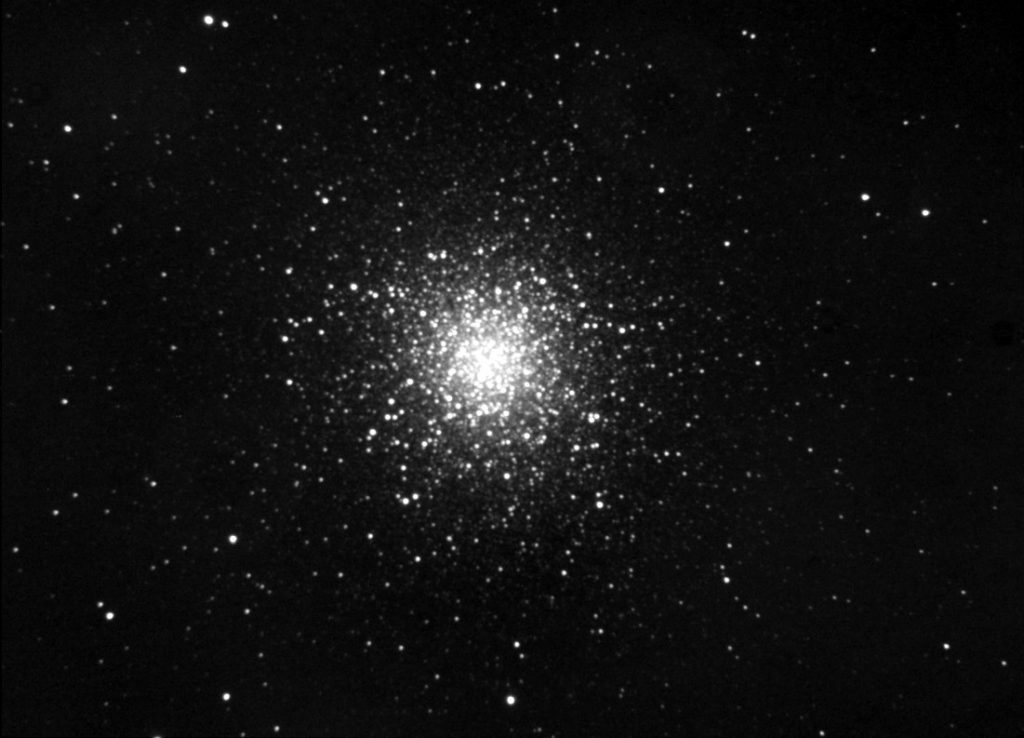
Image:
Object: M13
DATE-OBS: 2021-03-27T20:56:25.69
EXPTIME: 1320.00 (seconds)
SUBFRMS: 22
OBJCTRA: 16 41 46.016
OBJCTDEC: +36 27 13.50
Instrument:
Catalog: Gaia EDR3 + ATLAS
Bessell (B): +*.*, Bessell (V): +*.*
Bessell (R): +*.*, Bessell (I): +*.*
CCD: ATIK-383L+
FILTERS: R
TELESCOPE: C11, 1623.0mm
PRiSMv10, Tycho
Site:
ORIGIN: Cepheid Observatory, India, Vorion Scientific, India
SITELAT: +24:55:00:00
SITELONG:+75:33:58:99
Observers:
V.K.Agnihotri, B. Kumar, S. Mahawar, K.Vora
Remark:
High Moon, Sky Clear.
End
The offline variant, “GRAPPA”, was developed by Marc Serrau.
Please also include the following acknowledgements if using the catalog in a published paper:
Acknowledgements:
- Marc Serrau
- ESA GAIA Mission as GRAPPA3 has made use of data from the European Space Agency
(ESA) mission Gaia (https://www.cosmos.esa.int/gaia), processed by the Gaia Data Processing
and Analysis Consortium (DPAC, https://www.cosmos.esa.int/web/gaia/dpac/consortium).
The acknowledgements for ALTAS catalog, to be used when publishing a paper, are as follows:
This work has made use of data from the Asteroid Terrestrial-impact Last Alert System (ATLAS) project.
ATLAS is primarily funded to search for near earth asteroids through NASA grants NN12AR55G, 80NSSC18K0284,
and 80NSSC18K1575; byproducts of the NEO search include images and catalogs from the survey area.
The ATLAS science products have been made possible through the contributions of the University of Hawaii
Institute for Astronomy, the Queen’s University Belfast, the Space Telescope Science Institute,
and the South African Astronomical Observatory.
References:
Tonry, J.L., Denneau, L., Flewelling, H., Heinze, A.N., Onken, C.A., Smartt, S.J., Stalder, B., Weiland,
H.J., Wolf, C. (2018). “The ATLAS All-Sky Stellar Reference Catalog.” Astrophys. J. 867, A105.
Kostov, A., Bonev, T. (2017). “Transformation of Pan-STARRS1 gri to Stetson BVRI magnitudes.
Photometry of small bodies observations.” Bulgarian Astron. J. 28, 3 (AriXiv:1706.06147v2).
